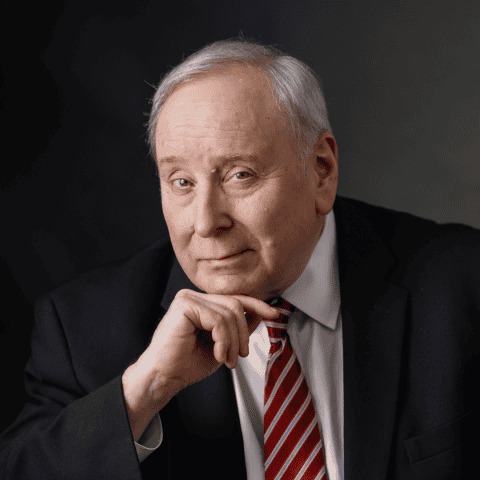 Marsz Żywych w Auschwitz – Birkenau (Fot. Grzegorz Celejewski / Agencja Wyborcza.pl)
Marsz Żywych w Auschwitz – Birkenau (Fot. Grzegorz Celejewski / Agencja Wyborcza.pl)
 Tysiące Żydów na Marszu Żywych w Auschwitz-Birkenau. Andrzej Duda: “Nie wolno milczeć wobec nienawiści”
Tysiące Żydów na Marszu Żywych w Auschwitz-Birkenau. Andrzej Duda: “Nie wolno milczeć wobec nienawiści”
Milena Kuchnia
– Moja rodzina została zamordowana w Auschwitz. Jestem tu po raz pierwszy, żeby się z tym skonfrontować i stanąć w tym miejscu — opowiada 87-letnia Fran Malkin.
Wychowywała się w Sokalu na Wołyniu. Jako sierota trafiła do getta. Przez dwa lata Polka Francisca Halamajowa chowała ją w swojej piwnicy wraz z kilkunastoma innymi Żydami. – Trzynastu z nas na strychu nad chlewem, a trzech w piwnicy pod kuchnią. Miałam trzy lata. Jestem tu także dla niej — wyznaje Ocalała.
 Fran Malkin, Ocalała z Holocaustu, podczas Marszu Żywych 2025 Fot. Grzegorz Celejewski / Agencja Wyborcza.pl
Fran Malkin, Ocalała z Holocaustu, podczas Marszu Żywych 2025 Fot. Grzegorz Celejewski / Agencja Wyborcza.pl
Marsz Żywych 2025. “My wyjdziemy stąd pieszo. Oni wyszli kominami, jako dym”
Od rana pod były niemiecki obóz koncentracyjny podjeżdżały autokary z żydowską młodzieżą z całego świata. W Polsce są już od kilku dni — odwiedzają miejsca zagłady, modlą się i uczestniczą w spotkaniach edukacyjnych.
Dziś, podczas Marszu Żywych, wraz z kilkusetosobową grupą polskich uczniów i studentów, pokonują tzw. “Drogę Śmierci” – trzykilometrową trasę spod bramy z napisem “Arbeit Macht Frei” w Auschwitz I do byłego obozu Auschwitz II — Birkenau. Na tegoroczny marsz przyjechało ok. 7 tys. młodych osób.
– Ja mam na liście szesnaście osób — mówi Amerykanin z grupy Davida Cohena. – Żeby się tego wszystkiego dowiedzieć, wynająłem genealoga, a potem podjąłem decyzję o przyjeździe.
– Za chwilę przejdziemy przez bramę. Nasi przodkowie też ją kiedyś przekroczyli. My wyjdziemy pieszo. Oni wyszli kominami, jako dym — dodaje David.
 Fot. Grzegorz Celejewski / Agencja Wyborcza.pl
Fot. Grzegorz Celejewski / Agencja Wyborcza.pl
Andrzej Duda: “Nie możemy milczeć wobec nienawiści wobec jakiegokolwiek narodu”
W tym roku marsz poprzedziło spotkanie prezydentów Polski i Izraela. O 10 rano politycy wspólnie złożyli wieńce pod Ścianą Śmierci i odwiedzili Pawilon Żydowski w Bloku 27 na terenie byłego obozu Auschwitz I. Następnie odbyli zamknięte, dwudziestominutowe spotkanie, po czym spotkali się z młodzieżą i z Ocalałymi z Holocaustu.
– Dziękuję prezydentowi Izraela, że wziął udział w Marszu Żywych, w roku 80-lecia wyzwolenia Auschwitz-Birkenau. Nie wolno milczeć wobec nienawiści wobec jakiegokolwiek narodu, bo to potem prowadzi do zagłady. Tragedię narodu żydowskiego nazywamy Holocaustem, ale to była dzika żądza nienawiści. Pamięć musi trwać jako ostrzeżenie dla świata — mówił Andrzej Duda.
 Fot. Grzegorz Celejewski / Agencja Wyborcza.pl
Fot. Grzegorz Celejewski / Agencja Wyborcza.pl
– W dniach, kiedy znów podnosi się antysemityzm, musimy mówić światu “nigdy więcej” poprzez oświatę i kulturę — stwierdził Isaac Herzog, prezydent Izraela.
– W zeszłym roku zostałam zaproszona do Niemiec. Przełamałam się i po raz pierwszy w życiu postawiłam nogę w tym kraju. Rozmawiałam z wnukami i prawnukami nazistów. Oni błagają nas o wybaczenie. Nie możemy zapomnieć, ale możemy próbować dążyć do wybaczenia — mówiła jedna z Ocalałych. – Never forget! – krzyknęła inna.
Marsz rozpoczął się wołaniem do Boga o miłosierdzie
O godzinie 13 pod bramą “Arbeit Macht Frei” rozległ się dźwięk szofaru, tradycyjnego instrumentu z rogu baraniego, który co roku rozpoczyna Marsz Żywych. To symboliczne wołanie do Boga o miłosierdzie.
Uczestnicy marszu w milczeniu wyruszyli w stronę Brzezinki. W powietrzu powiewały izraelskie flagi, widać było wypisane imiona i nazwiska zamordowanych oraz tablice z nazwami organizacji i państw — od Australii, przez USA, po Argentynę.
Z założenia marsz odbywa się w ciszy. Niektóre grupy szły jednak, śpiewając żydowskie pieśni.
 Fot. Grzegorz Celejewski / Agencja Wyborcza.pl
Fot. Grzegorz Celejewski / Agencja Wyborcza.pl
Młodzi: Co to w ogóle znaczy dziś “nigdy więcej”?
Dlaczego zdecydowali się na przyjazd do Polski? Większość z nich to potomkowie ofiar Holocaustu. Mówią o swoich rodzinach, wymieniają nazwiska. Niektórzy znają dokładne daty, inni do tej pory nie poznali dokładnych losów swoich bliskich — dziadków, matek, wujków.
– Przyleciałam tu z Kanady z grupą stu dziesięciu młodych ludzi pochodzenia żydowskiego. Nieważne, ile książek o Holocauście by przeczytali, ile filmów obejrzeli, dopiero kiedy stają tutaj, dociera do nich, czego dopuściła się ludzkość — mówi Tammy Glied, której rodzina zginęła w Auschwitz. – Spalono tu właściwie całą moją rodzinę. Ponad pięćdziesiąt osób — mówi.
Grupa jest w Polsce od kilku dni. Marsz jest zwieńczeniem projektu edukacyjnego, podczas którego żydowska młodzież odwiedza miejsca zagłady, uczestniczy w warsztatach edukacyjnych i integruje się ze sobą.
– Co dzieje się w głowie dorosłego człowieka, który nagle stwierdza, że czyjeś pochodzenie jest powodem do zabijania? I co to w ogóle znaczy dziś “nigdy więcej”, jeśli wojna dzieje się kilkaset kilometrów stąd? – pyta Kanadyjka.
 Fot. Grzegorz Celejewski / Agencja Wyborcza.pl
Fot. Grzegorz Celejewski / Agencja Wyborcza.pl
O historii swojej rodziny i powodach przyjazdu opowiada nam również Shari Graucher z Izraela. – Mój pradziadek i całe jego rodzeństwo trafili do Auschwitz. Jako jedyny przeżył. Wybierałem się do Oświęcimia latami, ale nigdy nie dotarłem. Kiedy wojna wybuchła u nas, a te straszne obrazy znów stały się rzeczywistością, poczułem, że to ten moment, że trzeba się z tym zmierzyć.
– Hitler nie miał dzieci, nie muszą tego oglądać. Jesteśmy tu my — synowie, córki i wnuki tych, których zamordowano — dodaje David Cohen, który do Auschwitz przyleciał z USA.
 Shari Graucher, potomek ofiar Holocaustu podczas Marszu Żywych 2025 Fot. Grzegorz Celejewski / Agencja Wyborcza.pl
Shari Graucher, potomek ofiar Holocaustu podczas Marszu Żywych 2025 Fot. Grzegorz Celejewski / Agencja Wyborcza.pl
Echa wojny w Palestynie słyszalne w Auschwitz-Birkenau
Podczas upamiętnienia ofiar Holocaustu nie zabrakło odniesień do wojny izraelsko-palestyńskiej. “Bring them home!” – krzyczała jedna z uczestniczek. Inni trzymali zdjęcia ofiar aktualnej wojny. Na spotkaniu z Ocalałymi i ich rodzinami pojawił się zaproszony były zakładnik Hamasu.
Na trasie marszu pojawił się liczący kilka osób protest propalestyński. Jeden z uczestników marszu pokazał w ich stronę środkowy palec. Protestujących otoczyła policja.
 Propalestyński protest podczas pochodu Marszu Żywych przez wiadukt. Fot. Grzegorz Celejewski / Agencja Wyborcza.pl
Propalestyński protest podczas pochodu Marszu Żywych przez wiadukt. Fot. Grzegorz Celejewski / Agencja Wyborcza.pl
Marsz Żywych zakończy się uroczystościami w Brzezince. Prezydent Izraela weźmie w nich udział osobiście, a Andrzeja Dudę będzie reprezentował Wojciech Kolarski, szef Biura Polityki Międzynarodowej i Sekretarz Stanu w Kancelarii Prezydenta RP.
Redagowała Dorota Gut
Zawartość publikowanych artykułów i materiałów nie reprezentuje poglądów ani opinii Reunion’68,
ani też webmastera Blogu Reunion’68, chyba ze jest to wyraźnie zaznaczone.
Twoje uwagi, linki, własne artykuły lub wiadomości prześlij na adres:
webmaster@reunion68.com









